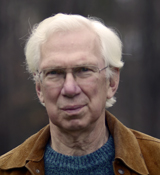PerfumersWorld
Foundation Course
Learn the technical skills you need
to become an artist with perfume!
You can sell a lot of perfume without knowing anything about how fragrances are created. The mechanics are simple. Put your fragrance (mixed with alcohol and water) in a bottle, cap it, label it, and sell it. Anything more would is a distraction.
The bottle, spray pump, and label are all just physical objects, easy to obtain and understand. But fragrance creation can seem like a magical art. I believe it is.
Two sides of creating perfume
Perfume is made by blending aroma materials. These materials can be essential oils, absolutes, isolates — materials found in nature that have been processed into a usable form for perfumery. But they can also be "smells" that have been developed by fragrance chemists in the laboratory. And, they can also be "aroma bases," premixed functional building blocks that can speed the creation of a new perfume.
Regardless of the source of these aroma materials, each is a potential ingredients for a perfume. In creating a perfume the perfumer's task is to decide which of these materials should go it (and in what proportion) and which should be left out.
Technology
The technology side of creating a perfume involves knowing the aroma materials — the raw materials of perfumery — and knowing how each of these materials will interact with other materials. Sometimes this knowledge comes from book learning, sometimes it comes from experience, sometimes it comes from just trying something you've never heard done before and observing and recording the results.
So to build a perfume the perfumer draws upon his or her technical knowledge of aroma materials and aroma blending. Some materials, he or she knows, will never work well together. Others will almost always work well together. And some ... you just have to try and see for yourself.
This is all technology. But it is only one side of perfume creation.
Art
Going back to the marketer, we all know that some perfumes sell well and some do not. Those that sell well, year in, year out, have a special quality that others do not. These fragrances appeal to a large number of people. And when a fragrance has sold well for a number of years, we can no longer attribute its success to the clever packaging or the celebrity who endorsed it. At some point we recognize that certain perfumes are special due to the fragrance itself.
And here we ask, how did this happen? Many perfumers with vast technical knowledge have never created a blockbuster scent. But multi-million dollar best sellers have been created by perfumers with limited technical knowledge but great artistic ability. This is why, in a technological world, perfume creation remains a high art.
Study
If you wish to become a creator of perfume — or if you now create perfume but would like to take your skills to a higher level — you may be looking for study materials that can improve your knowledge of fragrance technology, freeing you to create more effectively your own fragrances.
Guiding you through the technology of perfume creation is the purpose of the PerfumersWorld Foundation Course but its unspoken theme is to impart not just technical knowledge but also to unleash your inherent smell creativity. The hope is that you will soon be creating distinguished perfumes and colognes of your own. And, perhaps, even address your technical knowledge to the creation of other fragrances products such as soaps, body washes, shampoos, and creams.
Learning to think in smells
The basic message of the PerfumersWorld Foundation Course is that by thinking in smells you can, with the proper technical knowledge, create smells, great smells.
The teaching method of this self-study course revolves around the "ABC's of Perfumery" training in which the smells of thousands upon thousands of materials can be described by reference to 26 smell categories. (Hundreds of students who have learned perfumery by this method have found the "A-Z" categories remarkably easy to learn and use.)
The K26 materials kit which is included with the Foundation Course gives you instances of each of these 26 "A-Z" categories for reference and for building your own first perfumes (which you can start to do immediately once you receive the kit.)
The K26 kit also includes mixing pots, smelling strips, and sample formulas. These you can mix yourself for inspiration and deconstructing them, one ingredient at a time, will give you a solid understanding of each formula smells the way it does.
The Foundation Course also includes ten blocks of online lessons which you can study at your own pace. There is no time limit but PerfumersWorld does impose the discipline of requiring you to finish and prove your competence in one lesson block before you are passed on to the next. At the end of the course a numbered certificate of achievement is awarded and PerfumersWorld does keep records as to who has completed the course. Students who complete the Foundation Course are offered an opportunity for advanced studies with PerfumersWorld.
The Perfumer's Workbook
The Foundation Course includes a copy of The Perfumer's Workbook which can also be purchased separately. The Perfumer's Workbook is a computer program for fragrance creation. It can help you develop your own highly sophisticated fragrances that go far beyond your personal knowledge of aroma materials and their interactions. You can also use it, as most students do, to deconstruct, rebalance, and enhance fragrances you have created on your own.
The Perfumer's Workbook gives you a way to see your fragrances "on paper" before you spend the money on the raw materials needed to create them. It is a very valuable professional tool.
Order this fine product directly from our friends at PerfumersWorld
For article updates, etc., add your name to Phil's mailing list.


Philip Goutell
Lightyears, Inc.

